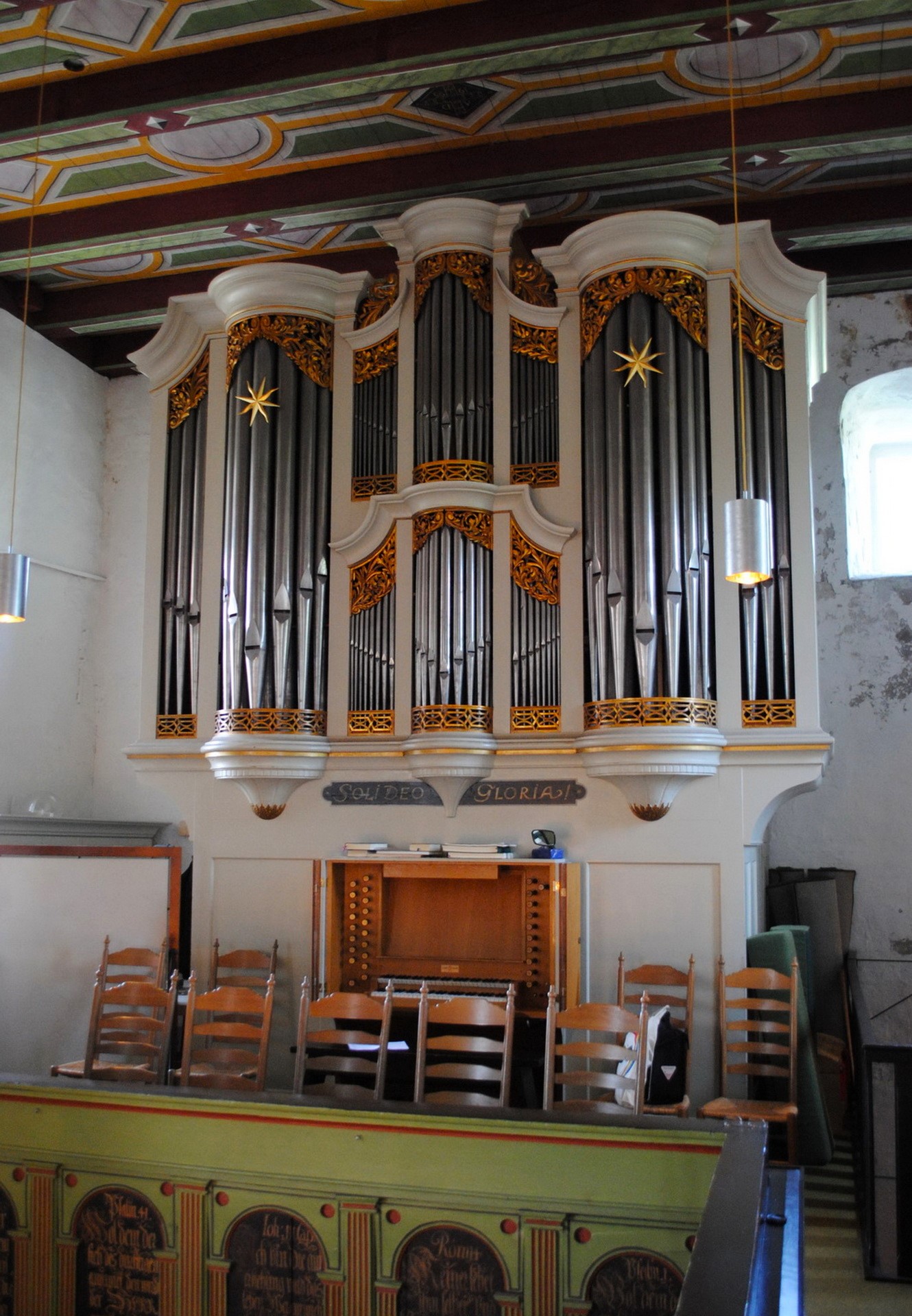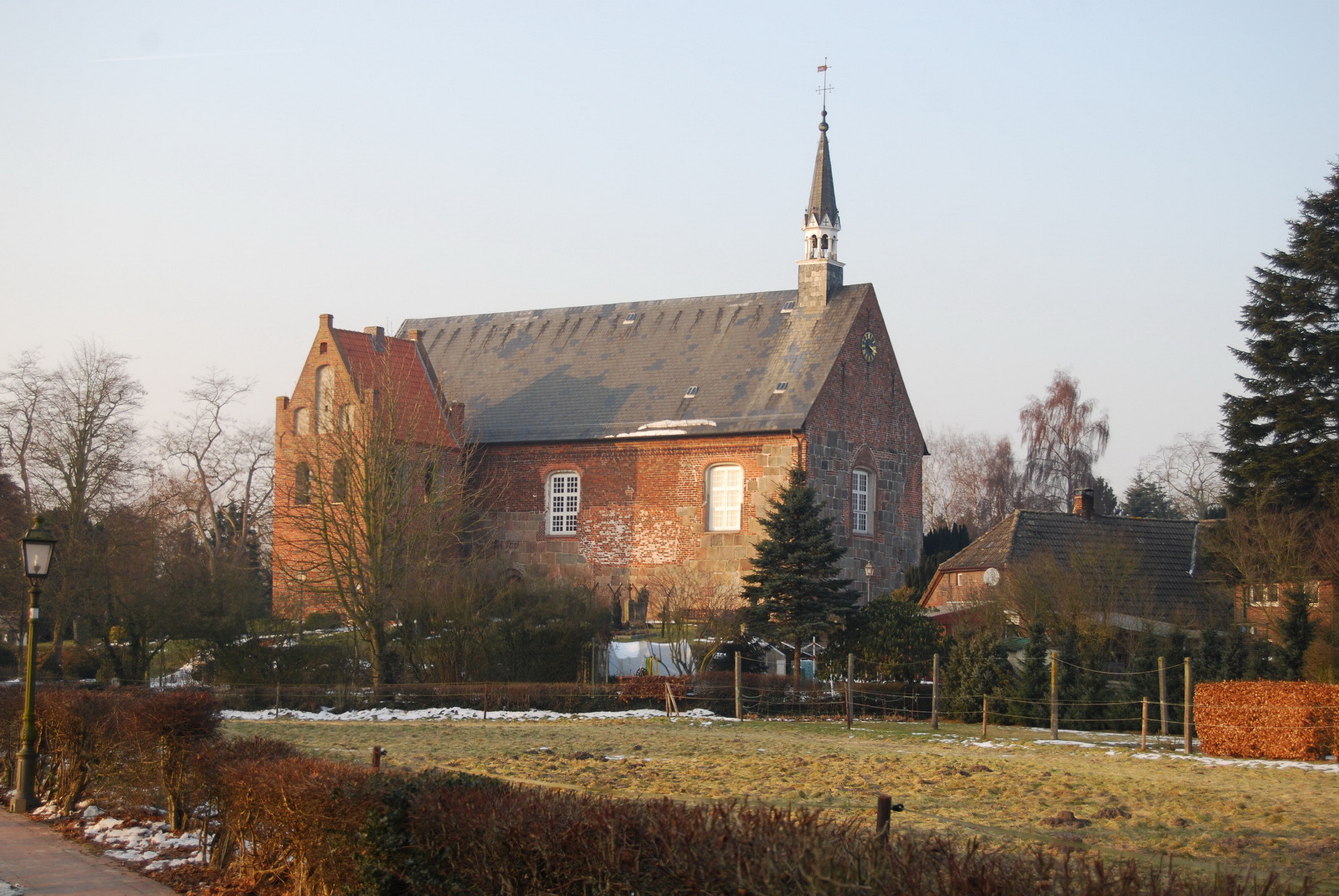Zetel, St.-Martins-Kirche
| Builder | J. W. Witzmann |
|---|---|
| Year | 1801 |
| Period/Style | Classical |
| Stops | 27 |
| Keyboards | 2+P |
| Keyaction | tracker/mechanical |
The St. Martin Church in Zetel, a granite stone structure dating back to around 1250, houses an organ with a history stretching back to the early 19th century when Johann Wolfgang Witzmann initially built it in 1801. Originally positioned on the west side of the church, the organ was relocated to the lower gallery in 1951. It underwent a significant transformation in 1970 under Alfred Führer's expertise, who revamped it with new wind chests, tractions, and slightly altered dispositions while also introducing new prospect pipes.
Over the centuries, the organ at St. Martin has seen numerous modifications, reflecting changes in musical styles and technological advancements. After its establishment by Witzmann, it was reworked in 1888 by Schmid III, who added an independent pedal and made several register changes. Alfred Führer played a pivotal role in its later history, conducting multiple restorations and upgrades from the 1930s through the 1970s, enhancing its mechanical and acoustic capabilities. The 1970 renovation by Führer was particularly comprehensive, ensuring the organ's suitability for modern liturgical use while maintaining its historical essence. Today, the organ not only serves as a functional instrument for church services but also as a historical artifact, representing over three centuries of evolving organ-building traditions in Zetel.
Over the centuries, the organ at St. Martin has seen numerous modifications, reflecting changes in musical styles and technological advancements. After its establishment by Witzmann, it was reworked in 1888 by Schmid III, who added an independent pedal and made several register changes. Alfred Führer played a pivotal role in its later history, conducting multiple restorations and upgrades from the 1930s through the 1970s, enhancing its mechanical and acoustic capabilities. The 1970 renovation by Führer was particularly comprehensive, ensuring the organ's suitability for modern liturgical use while maintaining its historical essence. Today, the organ not only serves as a functional instrument for church services but also as a historical artifact, representing over three centuries of evolving organ-building traditions in Zetel.
| Hauptwerk | Oberwerk | Pedal |
|---|---|---|
| Principal 8' | Gedackt 8' | Subbass 16' |
| Rohrflöte 8' | Principal 4' | Principal 8' |
| Quintade 8' | Flöte 4' | Gedacktbass 8' |
| Oktave 4' | Oktave 2' | Choralbass 4' |
| Kleingedackt 4' | Quinte 1 1/3' | Nachthorn 2' |
| Quinte 2 2/3' | Terzian 2f | Mixtur 4f 1' |
| Oktave 2' | Glöckleinton 1' | Fagott 16' |
| Spitzflöte 2' | Zimbel 3f 1/5' | |
| Sesquialtera 2f | Regal 8' | |
| Mixtur 4f 1' | ||
| Trompete 8' |
No Video/Audio samples available.
https://nomine.net/orgel/zetel-st-martin/
 Pipe Organ Map
Pipe Organ Map
